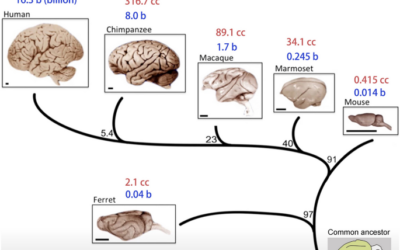Early Life and Education
Born in St. Louis, Missouri, in 1907, Charles Eames showed an early aptitude for engineering and design. After studying architecture at Washington University, he began his career as an industrial designer, experimenting with molded plywood techniques for splints and stretchers during World War II.
Early Experiments in Plywood
These early experiments laid the groundwork for the Eameses’ breakthrough in furniture design: the molded plywood chair. Developed in the late 1940s, the chair’s sculpted form and fluid lines were a revelation, a seating design that was at once ergonomic, elegant, and mass-producible. With its organic curves and seamless construction, the chair seemed to embody the very essence of modern living – a perfect fusion of art, craft, and industrial technology.
The Eameses went on to refine their molded plywood techniques in a series of iconic designs, including the DCW (Dining Chair Wood), the LCW (Lounge Chair Wood), and the DCM (Dining Chair Metal). These chairs, with their distinctive sculptural forms and innovative use of materials, established the Eameses as leaders of the burgeoning American modern movement.
Case Study Houses and the Power of Prefab
In the postwar years, as the demand for affordable, high-quality housing skyrocketed, the Eameses turned their attention to the problem of residential design. As part of the Case Study House program, a pioneering initiative to create model homes for modern living, the Eameses designed and built the groundbreaking Case Study House #8, also known as the Eames House.
Completed in 1949, the Eames House was a manifesto for the Eameses’ vision of modern architecture. Built entirely from prefabricated steel parts and glass, the house was a marvel of efficiency and flexibility, a kit of parts that could be assembled on site in a matter of days. With its open plan, abundant natural light, and fluid indoor-outdoor connections, the house embodied the Eameses’ belief in the power of design to shape a new way of living.
The Eames House became an instant icon, a symbol of the optimism and experimentation of the postwar era. Its influence can be seen in countless homes and buildings around the world, from the sleek steel-and-glass boxes of the International Style to the prefab and modular designs of today.
Films and the Art of Communication
In addition to their work in furniture and architecture, the Eameses were prolific filmmakers, creating over 125 short films over the course of their career. For the Eameses, film was a powerful tool for communication and education, a way to share their ideas about design, science, and culture with a broad audience.
The Eameses’ films were marked by their playful experimentation, their innovative use of techniques like stop-motion and multiple screens, and their ability to make complex ideas accessible and engaging. From the abstract patterns of “Parade” to the cosmic zoom of “Powers of Ten,” the Eameses’ films were a celebration of the wonder and diversity of the world, an invitation to look more closely, think more deeply, and imagine more boldly.
The Eames-Herman Miller Partnership
One of the most significant relationships in the Eameses’ career was their long-standing partnership with furniture manufacturer Herman Miller. This collaboration, which began in the 1940s, allowed the Eameses to bring their innovative designs to a wider market and solidified their place in the pantheon of modern furniture design.
Herman Miller’s commitment to quality and innovation aligned perfectly with the Eameses’ design philosophy. Together, they produced some of the most iconic pieces of 20th-century furniture, including the Eames Lounge Chair and Ottoman, introduced in 1956. This luxurious yet accessible design became an instant classic, embodying the perfect balance of comfort, craftsmanship, and modern aesthetics.
The partnership with Herman Miller also allowed the Eameses to experiment with new materials and production techniques. Their work in plastics, for example, led to the development of the revolutionary Eames Shell Chair, which could be mass-produced at an affordable price point without sacrificing style or comfort.
The Legacy of Eames
More than four decades after their deaths, the legacy of Charles and Ray Eames continues to inspire and inform the world of design. Their furniture, with its perfect balance of form and function, remains a touchstone of modern style, while their architecture and films continue to shape our understanding of what design can be and do.
But the Eameses’ impact extends far beyond the individual objects they created. Their work embodied a fundamental belief in the power of design to improve people’s lives, to create a world that was more beautiful, more functional, and more humane. Through their tireless experimentation and uncompromising vision, they showed us that design was not just a matter of style, but a way of thinking, a tool for solving problems and creating value in the world.
The Eameses’ Influence on Education and Design Thinking
Beyond their tangible creations, the Eameses made significant contributions to design education and the way we think about problem-solving. Their approach to design was holistic, considering not just the aesthetic qualities of an object, but its entire lifecycle, from production to use and eventual disposal.
This systems-thinking approach has had a profound impact on modern design education and practice. The Eameses’ emphasis on iterative prototyping, their embrace of constraints as creative catalysts, and their interdisciplinary approach to problem-solving are all principles that continue to be taught in design schools today.
Moreover, the Eameses were early advocates for what we now call “design thinking” – the application of design methodologies to a wide range of problems beyond traditional product design. Their work with corporations like IBM, where they created educational exhibits and films, demonstrated how design principles could be applied to complex information and systems.
As we navigate the challenges of the 21st century, the Eameses’ legacy reminds us of the vital role that design can play in shaping a better future. Their work calls us to embrace the power of creativity, collaboration, and innovation, to harness the potential of new technologies and materials in the service of human needs and aspirations. Most of all, it inspires us to approach design with the same sense of joy, curiosity, and optimism that animated all of the Eameses’ work, to see in every problem an opportunity, in every constraint a path to new possibilities.





0 Comments